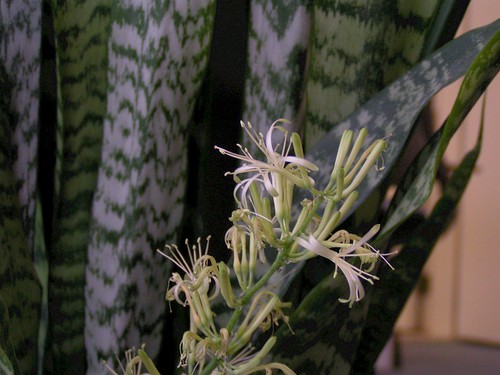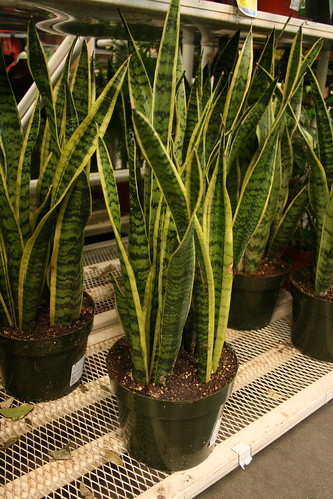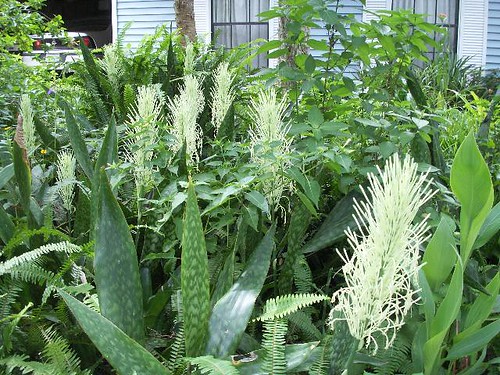
Sansevieria francisii by allloe
TheGardenLady has received a number of questions about Sansevieria or Mother -in- Law’s tongue. Two of the questions are listed here. Two others relate to keeping the Sanserieria alive after freezing and what to do if the plant has root rot.
My wife has a snake plant that’s starting to bloom, and it has a sticky liquid coming from the pod clusters. I’d like to know what it is and what it’s for?
I am caring my for my mother-in-law’s mother-in-law tongue. I of course don’t want to kill it, but it looks awful. I think it was over-watered at one time, and kept in the dark, damp, cool basement, over the winter months. I have recently brought them upstairs, where it is warmer and can dryout a little. It appaers the soil never dried out. The leaves at the soil line are yellowing and going up the plant leaf itself. They are falling over and nothing I do can keep them standing up. I think originally they were potted in Miracle grow potting soil. I would like to save these plants, but I not sure what I can do? Can I just cut the top portion of the leaf off and place it in soil to re-root?
There is no question that Sansevieria is a very popular plant. One of the reasons that the plant is so popular is because it is such a tough plant that is so easy to grow with so few problems or pests. There are about 70 species of sansevierias to have a variety of leaves to choose from. Because of its popularity there is an international Sansevieria Society in England. If you are interested, you might want to join or order some of their journals. Or you might want to join one of the many cactus and succulent plant societies in the US and around the world.

White milkglass with Snake Plant by sunshinesyrie
Sansevierias come from tropical and subtropical areas. Therefore a minimum temperature of about 50 degrees Fahrenheit is recommended. Short periods of lower temperatures may be tolerated as long as the plants are dry. They die if left out in the frost. If your plant has frozen, there is little hope that it will survive. But you can cut off the mushy parts of the leaves and leave the roots in the ground. If the roots are not frozen, they may push up new leaves. Leave them in the pot for a while and put the pot outdoors when the weather is warm and see if anything grows. You can always throw the pot out if nothing emerges by the end of the summer and start over with new plants. They are a relatively inexpensive plant to buy or maybe a friend will give you one of her plants.
I cannot stress enough the fact that Sansevierias thrive on neglect, especially in the cold months. If potbound and under stress ( usually in the summer), the plant will send up a stem with small, inconspicuous flowers. The plant is not grown for its flowers, it is grown for its leaves. But the flowers are an exciting thing to see and they are very fragrant. The sticky liquid on the stem is the nectar.
Continue reading “Taking Care of Your Sansevieria (Mother-in-Law’s Tongue)”










